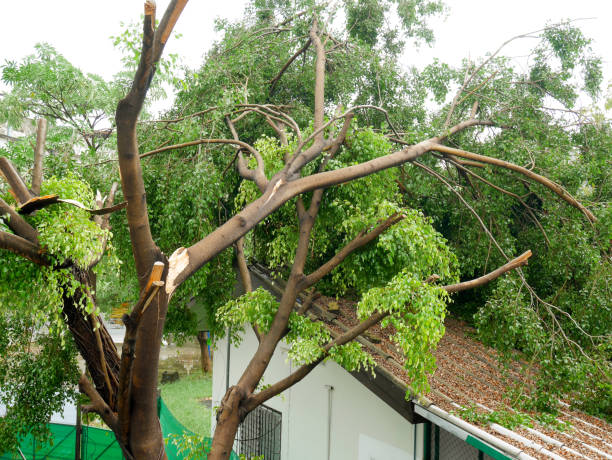In the calm before the storm
If you live in an area that is within the zone for tropical cyclones, or even if your area is subject to severe weather of other kinds, you know that sooner or later you will experience the destructive force of nature in your own back yard. For this reason, the plants and trees you choose as the foundation of your landscape plan should be those that can weather most storms. Few plants and trees can withstand the full force of the strongest tornadoes or hurricanes, but surprisingly, some can take a beating and come right back for you.
In my experience, the survivors come in two main groups. Some are the sacrificers, because they are designed to give up leaves, fronds or branches early in the storm so as to survive the worst to come. The others are the endurers, whose limbs, leaves and fronds are so durable and flexible that they can handle the very worst with relatively minor damage. Of course, there are a few that do a little of each, shedding leaves just enough to allow the limber branches to bend without breaking.
Doing what has to be done
My favorite example of the sacrificer is the Royal Palm (Roystonea). These palms have fronds that will begin to break off from the crownshaft long before winds are strong enough to bring a tree down. By the time storm winds are severe enough to topple trees, all the fronds on the Royal Palm will have come off. Having observed these palms through several hurricanes and even a possible twister, I have come to gauge the severity of storms by how many Royal Palm fronds come off the tree. For example, a one-frond storm is a garden-variety thunderstorm with gusty winds 40 or 50 miles per hour. Typically, these storms will take one green frond off a tall Royal Palm. Contrast this with a storm so powerful that all the fronds come off (see picture, below left). Such a storm will take all the fronds off of all Royal Palms within the most severe area of the storm zone. I’ve experienced one storm of this intensity, and it was hurricane Andrew, with winds topping out at 165+ mph. Even though I lost 27 palms in that storm, I lost no Royal Palms because every one sacrificed all leaves to insure survival. And for them, it worked, and worked well.
For the endurer, I can think of no better example than the Cypress tree (Taxodium). I’ve never seen one taken down by a storm, and generally they lose only smaller and dead branches. Their flexibility is almost legendary, in my opinion, because as Andrew was winding down, I saw my large Cypress bent very close to horizontal! After the winds ceased, the tree was upright once again. Even in this most severe of storms, the tree lost only a few feet of growth at the very top. After Wilma, another smaller Cypress I have was bent almost double by another, less durable tree that had fallen on it. After I removed the other tree, once again the Cypress sprang back and was little the worse for the experience.
For an example of a plant that both sacrifices and endures, the clumping bamboo serves well. In strong storms, many to most of the leaves will come off, and the remaining very flexible stalk will bend and sway, but rarely break unless young or immature. An occasional stalk will become so stressed that it becomes permanently bent over, and such a stalk is best cut off below the bend.
The root of the matter
One of the most important considerations with all the survivor types is how well the specimen is rooted to the ground. If you prepared proper planting holes, your tree or plant is much less likely to be tipped over or toppled altogether. Shallow rooting due to rock or hard subsoil obstruction is practically a guarantee that the tree or large plant will be toppled in severe weather. So for those of us who live in these storm zones, we need to take much greater care to be sure our trees and plants are properly installed. Just digging a hole slightly larger than the soil ball from the pot is not going to pass muster here! For each tree or plant, you must be sure to dig deep enough to remove any obstructions to strong, solid and deep root growth before backfilling and planting. Additionally, you should check to be sure that the trees or woody plants you have chosen are not rootbound or in the process of strangling themselves with their own circling roots. Such plants will never develop a very strong root system and will be more susceptible to damage than those with healthy radial root systems.
Original post here https://davesgarden.com/guides/articles/view/1268/.

